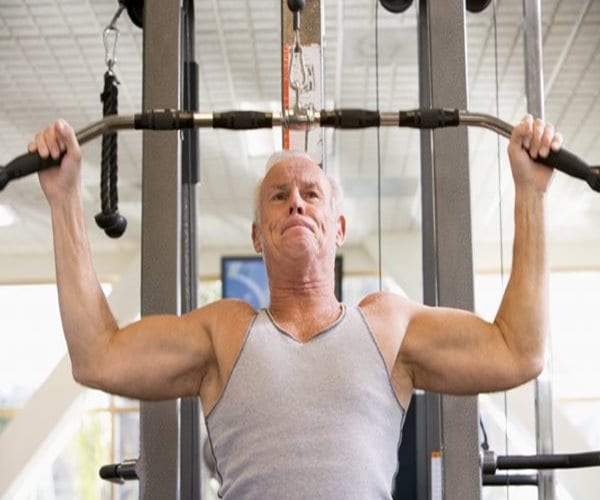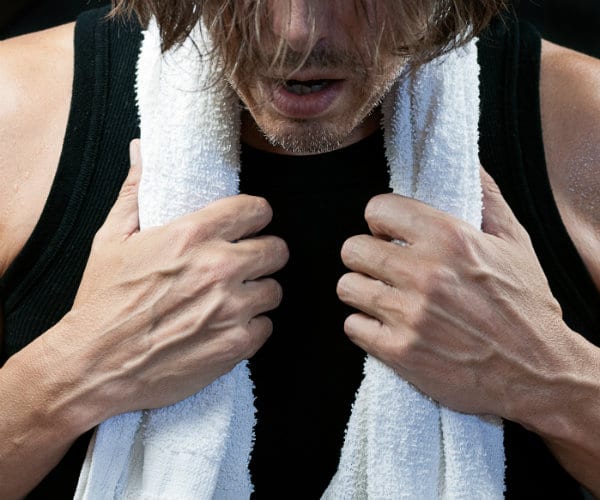Fitness
Back and Spinal Fitness at PUSH as Rx leads the field with a laser focus on supporting our youth sports programs. The PUSH-as-Rx System is a sport-specific athletic program designed by a strength-agility coach and physiology doctor with a combined 40 years of experience working with extreme athletes.
The program is the multidisciplinary study of reactive agility, body mechanics, and extreme motion dynamics at its core. A clear quantitative picture of body dynamics emerges through continuous and detailed assessments of the athletes in motion and under directly supervised stress loads.
Exposure to the biomechanical vulnerabilities is presented to our team. Immediately, we adjust our methods for our athletes to optimize performance. This highly adaptive system with continual dynamic adjustments has helped many of our athletes return faster, stronger, and ready post injury while safely minimizing recovery times.
Results demonstrate clear improved agility, speed, decreased reaction time with greatly improved postural-torque mechanics. PUSH-as-Rx offers specialized extreme performance enhancements to our athletes no matter the age.

by Dr Alex Jimenez DC, APRN, FNP-BC, CFMP, IFMCP | Diets, Fitness
If you plan to become a road warrior this summer, make sure you’ve got the right fuel for your body as well as your vehicle. Packing healthy snacks can keep your motor running until you reach the next pit stop.
We’ve asked top nutritionists to select savvy and savory snacks you can easily take with you on your next trip that your whole family will love
Energy bars. “Remember that not all energy bars are created equal,” says Amy Shapiro, a registered dietitian and founder of Real Nutrition NYC. “I like RX Bars, Health Warrior Chia Bars, and Kashi Bars.” Nutritionist Tara Gidus Collingwood tells Newsmax Health that she loves Raw Macaw bars that you can purchase readymade or design your own personal bar according to your taste.
Jerky. Chewy, savory turkey or beef jerky can satisfy a variety of appetites and is readily available at nearly every minimart or truck stop along the way. Look for brands that have the lowest sodium and fat content.
Cut up veggies, fruit. Shapiro tells Newsmax Health that these items, stored conveniently in a plastic bag, make an excellent and healthy snack to have on hand to keep hunger at bay and to help you stay hydrated.
Rice cakes, nut butters. Rice cakes topped with delicious, creamy nut butters in handy squeeze packs from Justin’s Nut Butter and other makers will make the whole family happy. They are available in flavors like maple almond butter, chocolate hazelnut butter, and honey peanut butter.
Popcorn. Everyone’s favorite movie snack is also great for road trips. Making your own healthy popcorn ahead of time without adding extra fat or salt is super simple. Brands such as the Little Kernel and Skinny Pop also feature healthier fats and lower amounts of sodium and are easily purchased on the road.
Cheese sticks. Most minimarts stock these handy, individually wrapped snacks in their refrigerator section. Cheese sticks are high in protein and calcium to maintain stamina on the road.
Nuts. Collingwood likes to pack almonds, pistachios, and other favorite nuts to take on the road. She also loves the roasted broad bean crisps with flavors like sweet cinnamon and cocoa dusted.
Fresh and frozen fruit. Dried fruit is too sugary, says Shapiro. Instead she opts for fresh fruit which is readily available everywhere and likes to freeze grapes for her road trips. “They take longer to eat and taste like little bites of sorbet,” she says.
Dry oatmeal. All you need is hot water and a cup to make a meal with dry oatmeal packets, notes Shapiro. “Add in some nuts or chopped fruit and you have a balanced meal.” You can also bring packets of dry cereal along to serve with milk that’s also readily available en route.
Hummus. Here’s another healthy filling snack that’s rich in protein and fiber as well as iron, folate, and B vitamins. Keep a tub of hummus in the cooler along with storage bags of prepared raw vegetables. Sabra also sells individual tubs of hummus.
Chia squeeze pouches. When you need a delicious pick me up along the way, try one of the new organic chia squeeze pouches with flavors like cherry beet, blackberry bliss, mango coconut and wild raspberry. You can buy the travel ready packs online at Amazon or at your local grocery store.
Dark chocolate. Collingwood admits she’s a chocoholic. “I will always bring a few individually wrapped squares of dark chocolate to be prepared when my sweet tooth strikes,” she says. Try keeping them in the freezer before you embark upon your journey and keep the chocolate cold and yummy in a cooler along the way.
Greek yogurt. “I will often pick up a yogurt at a gas station or airport store,” Collingwood says. All yogurts are good sources of calcium, potassium, protein, and B vitamins. Sprinkle on nuts or fresh fruit for extra nutrition.
Hard-boiled eggs. Sometimes called the perfect protein, eggs contain all the essential amino acids you need. Hard boil a few before your departure so you’ll have them on hand. You can also find them in the refrigerator section of gas station snack center.
Seltzer water. Your hunger craving may simply signal the need to hydrate. While water is fine, it’s a treat to opt for flavored, zero-calorie seltzer waters like La Croix and Dasani. You may also want to pack a sports drink, like Gatorade, to keep your electrolyte levels in balance especially when you traveling during hot summer months. Gatorade or a similar beverage is also easily found on the road.

by Dr Alex Jimenez DC, APRN, FNP-BC, CFMP, IFMCP | Diets, Fitness
Middle aged adults who do even a small amount of regular strength training exercise may be lowering their risk of so-called metabolic syndrome – itself a risk factor for both heart disease and diabetes, a recent study suggests.
People with at least three unfavorable health stats from a list that includes large waist size, high blood pressure or triglycerides, high blood sugar or low “good” cholesterol are said to have metabolic syndrome, and are at increased risk of going on to develop diabetes, heart disease or both.
But researchers found that when generally healthy people did strength-building exercise for less than an hour a week they had 29 percent lower odds of developing metabolic syndrome than their peers who did no resistance exercise.
“You already get health benefits with even a low amount of resistance exercise per week, which is good news for people with a very busy lifestyle,” said lead author Esmee Bakker of Radboud University Medical Center in Nijmegen, The Netherlands.
An estimated one-third of U.S. adults have metabolic syndrome, the authors write in Mayo Clinic Proceedings. Although previous studies have reported how aerobic exercise, such as running, walking and swimming, reduce metabolic syndrome, few studies have looked at resistance exercise alone.
The U.S. government’s Physical Activity Guidelines for Americans suggest that adults should do “muscle-strengthening activities that are moderate or high intensity and involve all major muscle groups on 2 or more days a week” and aerobic exercise 150 or more minutes each week.
“A modest amount of resistance exercise, such as two 30-minute sessions per week, has beneficial effects,” Bakker told Reuters Health by email. “We think that resistance exercise, in addition to aerobic exercise, should be included in standard medical recommendations to prevent metabolic syndrome.”
Bakker and colleagues analyzed data on more than 7,400 people who participated in medical examinations at the Cooper Clinic in Dallas, Texas, between 1987 and 2006. They ranged in age from mid-30s to mid-50s at the time of their examinations.
The research team found that 1,147 participants, or 15 percent, had developed metabolic syndrome during the follow-up period. Meeting the resistance exercise guideline of two or more days per week reduced risk of metabolic syndrome by 17 percent overall, compared to doing no resistance exercise. Those who met both aerobic and resistance training guidelines had a 25 percent lower risk of developing metabolic syndrome.
“This result was independent of other healthy behaviors, such as not smoking,” Bakker said. “It also made little difference if people did resistance exercise only on weekends or spread throughout the week.”
Bakker and colleagues plan to study the effect of resistance training on other health outcomes, such as the heart health benefits of a one-year resistance exercise training program. They also want to examine the long-term effects of different types and intensities of strength training on metabolic syndrome.
“The real next step is to see how we can get people to exercise,” said Paul Thompson of the University of Connecticut in Hartford, who wasn’t involved with the study.
“We can talk about the right dose and intensity, but it’s clear that in most studies, doing something is better than nothing,” he told Reuters Health by phone. “Most people do nothing, and the key is to get them to do anything.”
One limitation of the study is that it relies on self-reported survey data, which could bias the results. Thompson also cautions that some patients of the Dallas clinic are relatively more affluent than the rest of the country, so the results might not apply more generally.
“The increasing American girth has increased metabolic syndrome, which leads to insulin resistance and makes it harder for insulin to work,” he noted.
Thompson is studying how exercise affects people who have a tendency toward metabolic syndrome and ways they can work against a genetic disposition toward diabetes and hypertension, for example.
“Everybody should have some exercise,” he said. “Play with the dog or grandkids, do yard work or go for a walk. Just do something for 30 minutes every day.”

by Dr Alex Jimenez DC, APRN, FNP-BC, CFMP, IFMCP | Diets, Fitness
People who complain that they only have to smell food to gain weight may be right. Researchers at the University of California, Berkeley, found that obese mice who lost their sense of smell also lost weight. That part of the study was no surprise. But the strange part of the study found that mice that retained their sense of smell ballooned to twice their normal weight by eating the same amount of fatty food as the mice with no sense of smell.
Stranger still is that mice with a superior sense of smell gained even more weight on the same high-fat diet than the mice with a normal sense of smell.
The findings, which were published in the journal Cell Metabolism, suggest that the odor of what we eat may play an important role in how the body deals with calories. If you can’t smell your food, you may burn it rather than store it. But simply being able to smell your food may pack on the pounds.
Scientists know that humans who lose their sense of smell due to age, strokes, or diseases such as Parkinson’s, often become anorexic. They theorized that the loss of pleasure in eating can lead to depression, which can cause loss of appetite. But the new study suggests that the loss of smell itself plays a role in how the body uses energy.
For the study, researchers used gene therapy to destroy olfactory neurons in the noses of adult mice. They spared stem cells, however, so that the loss of smell was only temporary and lasted for about three weeks before the olfactory neurons re-grew.
The smell-deficient mice rapidly burned calories by reregulating their sympathetic nervous system, which is known to increase fat burning. The mice turned their beige fat cells, the subcutaneous fat storage cells that accumulate around our thighs and midriffs, into brown fat cells, which burn fatty acids to produce heat.
Some mice turned almost all of their beige fat into brown fat, becoming lean, mean fat-burning machines.
In these mice, white fat cells — the storage cells that cluster around our internal organs and are associated with many health problems — also shrank in size.
Although it would be a drastic step to eliminate smell in humans wanting to lose weight, Andrew Dillin, senior author of the study, said it might be a viable alternative for the morbidly obese contemplating stomach stapling or bariatric surgery.
“For that small group of people, you could wipe out their smell for maybe six months and then let the olfactory neurons grow back, after they’ve got their metabolic program rewired,” he said.
One problem is that the loss of smell was accompanied by a large increase in levels of the hormone noradrenaline, which is a stress response tied to the sympathetic nervous system. In humans, such a prolonged rise in this hormone could cause a heart attack.
But stomach stapling and bariatric surgery are also associated with problems. A study published in Surgery for Obesity and Related Diseases found that one in five patients who undergo bariatric surgery for weight loss is likely to develop problems with alcohol.

by Dr Alex Jimenez DC, APRN, FNP-BC, CFMP, IFMCP | Diets, Fitness, Physical Rehabilitation
It’s high season for grilling and backyard barbecues, with July 4 celebrations planned across the country. But experts say it’s important to be aware that the popular summer pastime is riddled with minefields when it comes to health and food safety.
“Grilling is generally a healthy way to cook food if you take certain precautions,” says registered dietitian Joan Salge Blake, an associate professor at Boston University’s Sargent College of Health and Rehabilitation Sciences.
Here are some tips from Blake and other experts:
Avoid food contamination: Mixing cooked food with juices from raw meat is a big no-no. “When it comes to food safety, we have to be careful about cross-contamination,” Blake tells Newsmax Health. “People bring the raw meat out on a platter, grill it and then put it back on the same platter without washing it. That’s how you can transfer pathogens that can cause a range of food-borne illnesses.”
Use a thermometer: You can’t trust your eyes to tell you whether or not meat is cooked enough. “One in four hamburgers turn brown prematurely, before they are at a safe internal temperature to be consumed,” says Blake. “Rather than trust our vision to determine if food is safe to eat, use a meat thermometer and make sure the internal heat is at least 165 degrees Fahrenheit.”
Keep the flame down: Cooking with high heat from an open fire creates carcinogenic compounds in beef, pork, poultry, and seafood. So while that flame-licked steak or salmon may have a great grilled flavor, it also contains heterocyclic amines (HCAs) from the charred part and polycyclic aromatic hydrocarbons (PAHs) from the fire’s smoke. Lab studies suggest that they can cause mutations in DNA that may boost the risk of cancer.
Pre-cook meat: One way to reduce HCAs and PAHs is to partially cook meat — by boiling or microwave — before grilling it. That will reduce the time it is exposed to the high heat and smoke that creates these dangerous compounds.
Flip frequently: “You want to keep turning the meat to keep it from getting charred, because that’s where the [biggest] problem is,” says Blake. “If it does get charred, don’t eat that part.” Aim to flip grilled foods at least once a minute.
Foil flare-ups: One thing that can make the flame flare up is when fat from the meat drips down to the heating source. Blake suggests putting some foil down on the grill, which will keep the melted fat from hitting the flame.
Use marinade: Studies show that marinades can significantly reduce the HCAs and PAHs in grilled meat. Researchers believe it works by helping to keep the meat moist, and it can also improve flavor. One study showed that using the herb rosemary lowered HCA levels by 90 percent. Other things that can cut down on the bad compounds are garlic, onion and honey.
Watch your sauce: Blake warns not to use the leftover marinade for a sauce on the grilled meat, unless you cook it as well, because it could contain bacteria and other pathogens from the raw meat.
Grill veggies: “One of the best things you can do for overall health is to grill more vegetables than protein sources,” says Blake. “They don’t produce HCAs and PAHs, and they have a wide range of health benefits.”
Be fire smart: The most obvious health threat of grilling is the fire itself. According to the National Fire Prevention Association, about 9,000 blazes are sparked by grills every year, causing an average of 10 deaths, 160 injuries and more than $100 million in property damage.
Using common sense can reduce fire risks. The NFPA cites the main fire causes as placing the grill too close to anything that can burn, not cleaning it regularly, and leaving it unattended. If you’re using a propane grill, don’t turn the gas on for too long before lighting it. You should also check lines and connections for leaks.

by Dr Alex Jimenez DC, APRN, FNP-BC, CFMP, IFMCP | Diets, Fitness
UK research has revealed that many middle-aged office workers are as sedentary as elderly pensioners.
Carried out by the University of Edinburgh’s Physical Activity for Health Research Centre, the team gathered data on 14,367 people in Scotland taken from the 2012-14 Scottish Health Survey, to look at how age and sex affected weekday and weekend sedentary time.
Defined as time spent in any waking activity done while sitting or reclined, sedentary time includes working, eating, reading, watching TV, or spending time on a computer.
Many recent studies have looked at the effects of sedentary time on health, with some experts warning that more than seven hours of inactivity a day can increase the risk of cardiovascular disease, type 2 diabetes, some cancers, and an early death, even if people are physically active at other times of the day.
The results of the new research found that men aged 45 to 54 spend on average 7.8 hours per weekday sitting down, compared with 7.4 hours for the over-75s.
Time spent sitting at work is the main reason for their sedentary time.
The team also found that only the youngest group of men — 16 to 24-year-olds — are significantly less sedentary than the over-75s on weekdays.
Most of the time spent sedentary in this age group is spent in front of a TV or screen.
At the weekend, those aged 25 to 54 were the least sedentary, sitting for between 5.2 and 5.7 hours a day, and in contrast the over 75s were the most sedentary, at 7.3 to 7.4 hours a day.
In addition, the researchers also found that men spend less time in front of a screen as they get older, with women peaking in middle-age.
The results now replace previous findings that older adults are the most sedentary age group in the UK and highlights the potential health risks of excessive sitting at work.
“Large parts of the population are dangerously sedentary, something we have underestimated. We need to tackle high levels of sedentary time in early and middle age, when patterns may develop. Our findings suggest that changing habits in the workplace could be an appropriate place to start, given how much time we spend sitting there every day,” commented one of the study’s authors Tessa Strain.
The findings were published in the Journal of Sports Sciences.

by Dr Alex Jimenez DC, APRN, FNP-BC, CFMP, IFMCP | Diets, Fitness
Obesity is not only an epidemic for the human race. One third of dogs and cats also suffer from it, according to a new American study. A lack of exercise, overfeeding and genetics are all contributory factors.
According to this American study published recently by Banfield Pet Hospital, the number of overweight and obese cats rose by 169% in the US over the past 10 years. For dogs, the increase was 158%. And the numbers are still trending upwards.
The survey analyzed data gathered on 2,521,832 dogs and 505,389 cats based on visits and checks made at veterinary clinics across the country. Almost 30% of the dogs and 33% of the cats seen during these visits were overweight or obese.
The main causes are a lack of exercise and too much food. A genetic predisposition can also be a factor, as some breeds of dogs and cats are more likely to become obese. Pets that have been sterilized also have an increased risk of gaining weight, as hormonal changes can boost their appetite and make them less inclined to play and take a walk.
Obesity has consequences for animal health. It raises the risk of type 2 diabetes, arthritis and heart disease.
Banfield Pet Hospital says that up to the age of 4 months, a kitten should be fed 4 times a day, and then 3 times daily when it is aged between 4 and 6 months. After that, feeding should be no more than twice a day. For dogs, it varies according to the animal’s size, age, physical condition and how active it is.
The study warns against the common attitude of giving treats to a dog or filling its bowl out of love or guilt for leaving it home alone. Portion size is also a problem, as it is often too generous.
Banfield Pet Hospital advises that the ideal weight for a dog or cat is when you can feel the animal’s ribs without being able to see them. If the animal is 10% above its correct weight, its ribs are no longer visible and cannot be felt, and if it is 20% above, no waist can be seen. Anywhere above the 20% mark is considered to be obese.
Only sport and a diet should be used to lower a pet’s weight.
Obesity also affects other types of pets. A British study in 2014 undertaken by the Pet Food Manufacturing Association revealed that 28% of pet rodents were obese and 15% of indoor birds.
And awareness can be an issue. In France, a 2010 survey by BVA/Gamm Vert revealed that only 13% of pet owners thought that their dog had a weight problem.

by Dr Alex Jimenez DC, APRN, FNP-BC, CFMP, IFMCP | Diets, Fitness, Gastro Intestinal Health, Gut and Intestinal Health
When it comes to stomach discomfort during exercise, forget that old adage “no pain, no gain.” New research suggests that excessive strenuous exercise may lead to gut damage.
“The stress response of prolonged vigorous exercise shuts down gut function,” said lead author Ricardo Costa.
“The redistribution of blood flow away from the gut and towards working muscles creates gut cell injury that may lead to cell death, leaky gut, and systemic immune responses due to intestinal bacteria entering general circulation,” Costa added. He’s a senior researcher with the department of nutrition, dietetics and food at Monash University in Australia.
Researchers observed that the risk of gut injury and impaired function seems to increase along with the intensity and duration of exercise.
The problem is dubbed “exercise-induced gastrointestinal syndrome.” The researchers reviewed eight previously done studies that looked at this issue.
Two hours appears to be the threshold, the researchers said. After two hours of continuous endurance exercise when 60 percent of an individual’s maximum intensity level is reached, gut damage may occur. Costa said that examples of such exercise are running and cycling.
He said heat stress appears to be an exacerbating factor. People with a predisposition to gut diseases or disorders may be more susceptible to such exercise-related health problems, he added.
Dr. Elena Ivanina is a senior gastroenterology fellow at Lenox Hill Hospital in New York City. She wasn’t involved with this research but reviewed the study. She said that normal blood flow to the gut keeps cells oxygenated and healthy to ensure appropriate metabolism and function.
If the gut loses a significant supply of blood during exercise, it can lead to inflammation that damages the protective gut lining. With a weakened gastrointestinal (GI) immune system, toxins in the gut can leak out into the systemic circulation — the so-called “leaky gut” phenomenon, Ivanina said.
But, she underscored that exercise in moderation has been shown to have many protective benefits to the gut.
“Specifically, through exercise, patients can maintain a healthy weight and avoid the consequences of obesity,” she said. Obesity has been associated with many GI diseases, such as gallbladder disease; fatty liver disease; gastroesophageal reflux disease (GERD); and cancer of the esophagus, stomach, liver and colon. Regular moderate physical activity also lowers the risk of cardiovascular disease, type 2 diabetes and depression.
To prevent exercise-related gut problems, Costa advised maintaining hydration throughout physical activity, and possibly consuming small amounts of carbohydrates and protein before and during exercise.
Ivanina said preventive measures might help keep abdominal troubles in check. These include resting and drinking enough water. She also suggested discussing any symptoms with a doctor to ensure there is no underlying gastrointestinal disorder.
Costa recommended that people exercise within their comfort zone. If you have stomach or abdominal pain, “this is a sign that something is not right,” he said.
Individuals with symptoms of gut disturbances during exercise should see their doctor.
The study authors advised against taking nonsteroidal anti-inflammatory drugs — including ibuprofen (Advil, Motrin) or naproxen sodium (Aleve) — before working out.
Costa said there’s emerging evidence that a special diet — called a low FODMAP diet — leading up to heavy training and competition may reduce gut symptoms. FODMAP stands for fermentable oligosaccharides, disaccharides, monosaccharides, and polyols. FODMAPs are specific types of carbohydrates (sugars) that pull water into the intestinal tract.
The International Foundation for Functional Gastrointestinal Disorders suggests consulting a dietitian familiar with FODMAP diets. Such diets can be difficult to initiate properly on your own, the foundation says.
Costa also said there’s no clear evidence that dietary supplements — such as antioxidants, glutamine, bovine colostrum and/or probiotics — prevent or reduce exercise-associated gut disturbances.
The study results were published online recently in the journal Alimentary Pharmacology & Therapeutics.







